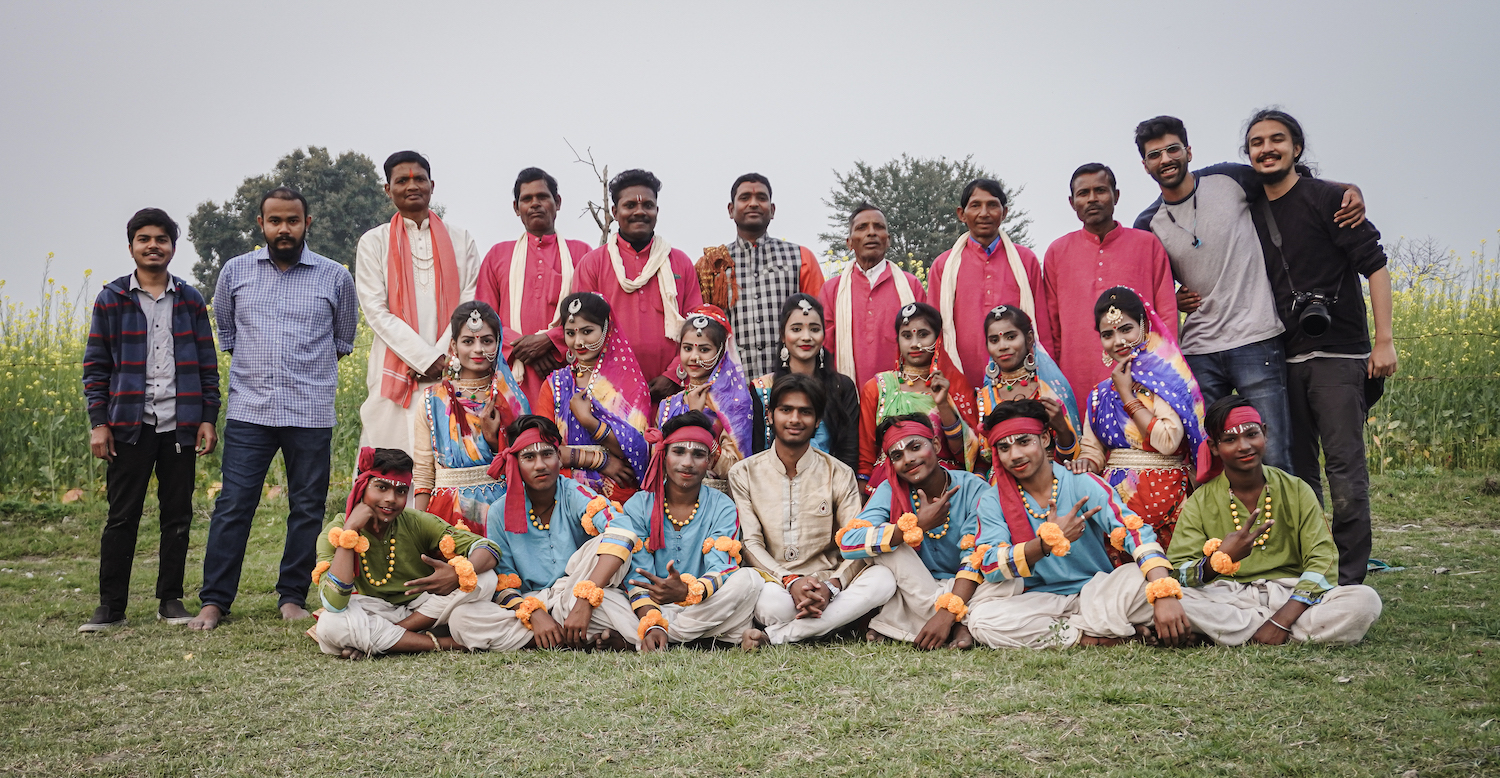
“Grasping a long lost art form.”
A place of folktales and strong religious beliefs, Ayodhya is subjected to various opinions and historic discussions. In Indian mythology, it is the place of birth of Lord Rama and is considered the holy land around which the epic of Ramayana is set and revolves. Music and folklore have gone hand in hand since humans have started living in communities. Tales about gods and goddesses have been told to almost every child in India during their years of development.
These tales have taken various forms inspired by storytelling through religious texts to music. One such form of music and dance emerged in ancient times in the province of Awadh. This dance form was called Keherwa. Most musicians in the country know Keherwa taal as a simple 8-beat pattern equally divided into two divisions. Nearly nobody knows about the long-lost art form that is built around it and goes by the same name.
Our journey brought us to the location of the origin of this art form. In Ayodhya, we met Mukesh Kumar, who works to revive this art form and leads a troupe of Keherwa musicians and dancers. These are individuals who have a passion for music, dance, and performing their craft. They come from humble backgrounds and with passion for performance in their eyes, glaring as they made their way to the sight of the recording.
Right by the large fields of mustard was the place chosen for their performance. Mukesh himself seemed to be very excited as he had done very few semi-professionally recorded videos for old folk songs before. As an artist, he began learning at a later stage in his life, and during his mid-twenties, he felt that this was a great opportunity, and despite his natural talent in folk music and singing, he seemed to be quite polite and humble.
Along with him was a talented vocalist, Bharat, who had been singing since childhood and had a deep, and yet beautiful voice while he recited the songs and impressed everyone present in and around the place. Another highly talented singer, Tanya Mishra, also has a vibrant smile and a generally playful attitude in life. Along with these instrumentalists who held up to 40 years of experience, their team comprises a wholesome group of people with highly diverse experiences. Within a few minutes, the people from the surrounding villages came to the site as they were even more excited to witness this event. They even helped us out there with the provision of water in a large container.
They began to sing, and the people around, especially the kids, who seemed to be making noises earlier, listened with high devotion. The dance was an energetic one with swift arm and leg movements done in coordination and harmony. Eventually, the dancers moved onto acrobatic formations showing the sort of strength and athleticism the Keherwa dancers of ancient times must have required to pull off this art form.
The song expressed the story of how Lord Rama was able to impress each and everyone at the ceremony of the selection of Goddess Sita’s groom. The kind of vigour he displayed as he picked up Lord Shiva’s bow and broke it with his brute strength. It was an auspicious occasion as Goddess Sita was getting married to a man of her selection.
“Hey Awadh ke lalna,
(Oh Lord of Awadh!)
Aaj Mithilapur mein aaye hain Awadh ke laalna”
(Awadh’s beloved has arrived at Mithilapuri, Oh Lord)
It shows how vital our religious texts have been in the development of music in our country. The folklores of India have shaped the way that art and culture are looked upon, and the music and dance of the folk represent jaw-dropping techniques used by the artists. It is only a matter of exploration to find values within our spectrum of traditions that can teach us how to be and sometimes be or not be; to show strength and vigour in life and never think that anything is beyond our grasp or reach.
